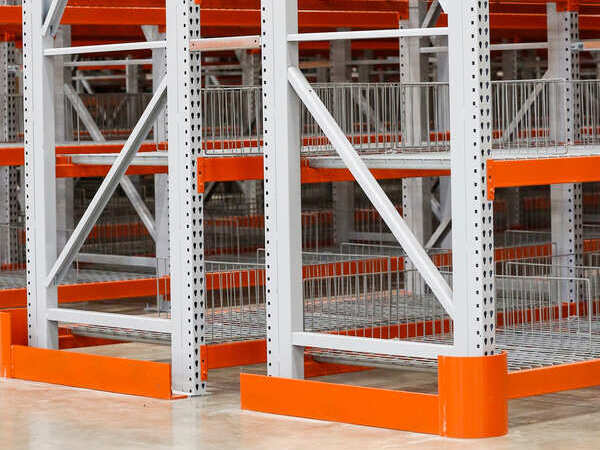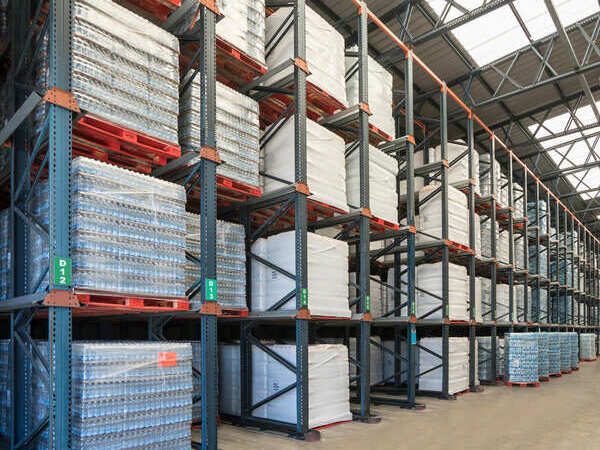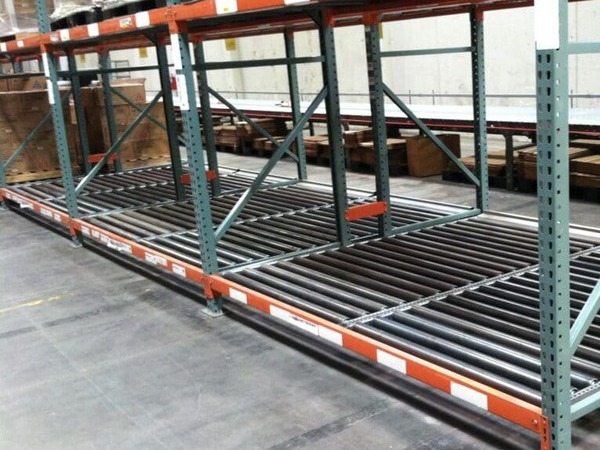Gọi cho chúng tôi :8615298359310
Gọi cho chúng tôi :8615298359310
What is Warehouse Racking System?
Warehouse racking systems play a crucial role in optimizing warehouse operations. By means of a considerate arrangement of proper warehouse racking, warehouse owners can improve the overall operational efficiency of the warehouse by reducing the tedious picking process
As far as warehouse racking plays a vital role in warehouses, nevertheless, many factors of warehouse facilities will decide which type of warehouse racking should you choose: Buffer Area Location, Entry and Exit place of warehouse, Aisle width, Docking Locations, and many other factors could be important.

These systems are particularly beneficial in warehouses that require frequent access to inventory, enabling efficient warehouse operations.

Drive-in racking is suitable for the LIFO process, often used for nonperishable goods, while drive-through racking supports the FIFO process, ideal for perishable items. These systems are particularly useful in warehouses that handle large volumes of similar products.
Push-back racking systems are typically used for bulk storage. When a pallet is loaded, it pushes the next pallet back; unloading a pallet moves it to the front. Benefits of push-back racking systems include:
These systems utilize the LIFO system and are well-suited for warehouses that handle large quantities of inventory with a longer shelf life.
Flow racking systems, also known as gravity racks, use gravity to move items from the loading end to the unloading end. Benefits of flow racking systems include:

These systems support the FIFO process, making them ideal for warehouses with frequent stock rotation and time-sensitive products.
Selecting the appropriate racking system for a warehouse depends on several factors:
Basic Requirement of Warehouse Racking
Structural Integrity: The racking system must be strong and stable enough to support the weight of the products being stored. This includes the upright frames, beams,
connections, and overall stability of the system.
Load Capacity: Each rack should have a clearly labeled weight capacity that should never be exceeded. OSHA mandates that all warehouse racking must be capable of supporting the maximum intended load.
Safety: Warehouse racking systems should be designed and used in a way that minimizes safety risks. This includes having proper clearance between racks and aisles for safe forklift operation, using guardrails to prevent falls, and regularly inspecting the racking system for damage.
Accessibility: The racking system should be designed to allow for easy access to stored products. This means having adequate aisle space for forklifts and other material handling equipment to maneuver, and ensuring that products are stored in a way that they can be easily retrieved.
Compliance with Regulations: Warehouse racking systems must comply with all applicable safety regulations, such as those set by OSHA. These regulations cover a variety of factors, including load capacity, aisle width, and fire safety.
Each racking system offers distinct benefits, making it crucial to assess specific warehouse needs before making a decision. If you would like to know our solution for the warehouse racking system, please contact us herein or leave your inquiry at sales@cnvison.com
Q1: What is the main benefit of selective racking systems?
A1: Selective racking systems provide easy access to each pallet without needing to move others, making them ideal for warehouses with frequent inventory access.
Q2: How do drive-in racking systems differ from drive-through racking systems?
A2: Drive-in racking systems have a single entry and exit point, supporting the LIFO process, while drive-through racking systems allow access from both sides, supporting the FIFO process.
Q3: What type of inventory is best suited for push-back racking systems?
A3: Push-back racking systems are ideal for bulk storage of inventory that follows the LIFO system, particularly for items with a longer shelf life.
Q4: Why are flow racking systems considered efficient?
A4: Flow racking systems use gravity to move items, eliminating the need for electricity and ensuring efficient high-density storage with FIFO rotation.
Q5: What factors should be considered when choosing a warehouse racking system?
A5: Key factors include cost, available floor space, pallet type and size, access needs, product type, Forklift Type and available height, and the specific requirements of the inventory being stored.
bản quyền
© 2024 Jiangsu Vijing Logistics Technology Co., Ltd. Đã đăng ký Bản quyền.
 MẠNG HỖ TRỢ
MẠNG HỖ TRỢ